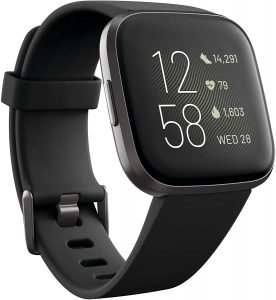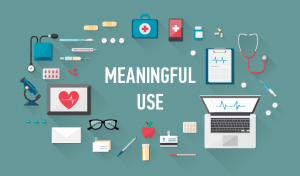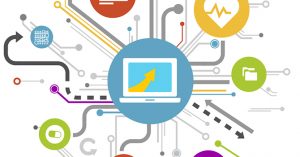Interoperability. Not exactly a word that rolls off the tongue easily, is it? But once you know what it is, you’ll understand why it’s so important, especially in the healthcare industry.
In the early stages of healthcare IT, clinical documentation was performed on mainframe-connected workstations, and eventually on Windows-based software running on individual PCs. The only information that was relayed from these platforms was to billing services. Rival systems were constructed on different platforms with different programming languages – all by people with very different ideas about what these systems should concentrate on.
As healthcare IT has advanced, the volume and scope of connected systems has escalated. Hospitals today typically have in excess of a hundred systems that need to communicate with each other, to say nothing of the mounting number of devices within the overall healthcare setting as well as the upsurge in consumer-based devices like FitBits.
All this means that healthcare IT systems must become more proficient at exchanging data among multiple devices and a variety of systems. This is where interoperability comes in.
Interoperability is at the epicenter of health IT’s assurances and is vital to the success of EHRs. So what IS it?
WHAT IS INTEROPERABILITY?
The Health Information and Management Systems Society (HIMSS) defines interoperability as “the ability of different information technology systems and software applications to communicate, exchange data, and use the information that has been exchanged.” This is achieved through the data exchange framework and standards that permit data to be shared across clinicians, labs, hospitals, pharmacies, and patients regardless of the application or application vendor.
When disparate systems are able to work in tandem to share patient data seamlessly across all networks, within and across organizational boundaries, providers are able to advance the effective delivery of healthcare for individuals and communities. In essence, any healthcare professional from anywhere in the world is able to access a patient’s records and provide treatment and care without delay.
DIFFERENT TYPES OF INTEROPERABILITY:
According to HIMSS, there are four types of interoperability:
- Foundational: Involves unrelated systems developing the necessary requirements for one system or application to safely swap data with another. With foundational interoperability, the receiving system may or may not be able to decipher the data.
- Structural: Details the format, syntax, and organization of data exchange, setting up a uniform transfer of information without altering its critical or operational purpose. With structural interoperability, the data exchanged between health IT systems is able to be interpreted at the data field level.
- Semantic: Concerns systems exchanging, interpreting, and utilizing data. Patient info is exchanged among authorized parties in different health IT systems and products, thus improving healthcare delivery and safety.
- Organizational: Includes the technical, policy, and organizational components of interoperability. Promotes simple, secure, accurate, and timely data exchange between providers and provider organizations.
WHY IS INTEROPERABILITY IMPORTANT?
In order to deliver effective, comprehensive care to their patients, medical professionals must be equipped to provide and receive access to medical records, patient histories, and data analytics in a centralized manner.
The problem with this is that no singular software is used within any healthcare institution. Practically all hospital systems, clinics, pathology labs, and other organizations employ different types of software and hardware solutions, which are usually acquired from a number of different vendors.
While interoperability is crucial to improving patient outcomes and addressing the health needs of individuals and populations, it only works to the extent that the various medical software vendors will agree to share what often can be proprietary system data. Stakeholders in medical practices must also be willing to disseminate detailed patient information over networks for access by different databases.
When this type of cooperative system is successfully implemented, personal health information entered into a system once becomes available to patients wherever they are and whenever they need it. Medical professionals will be able to smoothly and easily transmit a patient’s clinical data from one type of health information software to another medical data platform in a way that both the computers and the medical professionals on the receiving end are able to understand what’s being sent.
GOALS OF HEALTHCARE INTEROPERABILITY:
Enable Greater Efficiency
When data is presented in a coherent, methodical fashion – regardless of the source – it’s far easier for clinicians to quickly get to the heart of the matter as they make decisions about treatment. Successful interoperability greatly decreases the amount of time it takes to transfer relevant information between two or more healthcare professionals or between a healthcare professional and a patient.
Putting the ball in the patient’s court when it comes to laborious administrative tasks, such as searching for documents, filling out multiple forms, re-explaining their symptoms or medical history to numerous providers, and sorting out insurance issues wastes an enormous amount of time – both before and, often, after they have received care.
Having accurate data and insights readily available – literally at a healthcare provider’s fingertips! – means that certain administrative and clinical functions can be significantly streamlined. The majority of manual data entry will be eliminated, and overlapping workflows will be reduced or eliminated. Cutting down on repetitive tasks removes a considerable amount of administrative burden for staff and frees them up to focus on other important tasks. The time saved will allow clinicians to treat more patients, drastically increasing margins for the practice and improving the quality of care that patients receive. The end result of all this is an overall enhanced patient experience.
Better Patient Engagement
Healthcare is essentially about inspiring providers to achieve more favorable patient outcomes. At the same time, it’s also concerned with furnishing patients with information and knowledge that they can leverage to become actively involved in their own care.
Patients should be permitted to access their own health data no matter where they are in the country, and no matter where their record predominantly resides. Clinicians should be able to pull any necessary health records, with the consent of their patients, regardless of whose system currently possesses them.
Large-scale measures such as Meaningful Use (discussed in further detail below) have invariably been geared toward improving care and increasing access to the information that patients need. The implementation of patient portals within EHR systems is placing that data directly into the hands of patients who otherwise might not give their health very much consideration.
In addition, clinicians can get back with their patients far faster than before, affording them to take the next steps in the diagnostic process, provide continuity of care with referrals, or elaborate on details concerned with their treatment plan.
Simply put, health information must motivate individuals to actively manage their own health and participate in clinical decision-making. As interoperability progresses, it will become easier for people to assimilate a more complete view of their health and healthcare.
Achieve “Meaningful Use” (aka Promoting Interoperability Program)
The American Reinvestment & Recovery Act (ARRA), enacted in February 2009, included many measures to modernize the nation’s infrastructure, one of which was the Health Information Technology for Economic and Clinical Health (HITECH) Act. The HITECH Act included the concept of Electronic Health Records-Meaningful Use (EHR-MU), an effort led by Centers for Medicare & Medicaid Services (CMS) and the Office of the National Coordinator for Health IT (ONC). HITECH proposed the meaningful use of interoperable electronic health records throughout the U.S. healthcare delivery system as a critical national goal.
Meaningful Use was defined by the use of certified EHR technology in a meaningful manner, ensuring that the technology connects in a manner that provides for the electronic exchange of health information to improve the quality of care. By using certified EHR technology, the provider must submit to the Secretary of Health & Human Services (HHS) information on the quality of care and other measures.
In April 2018, CMS rebranded the EHR Incentive Programs as the Promoting Interoperability Programs. This change has moved the programs beyond the existing requirements of Meaningful Use to a new phase of EHR measurement, with an increased focus on interoperability and improving patient access to health information.
Whereas with Meaningful Use, healthcare providers were given financial incentives for attesting to certain processes and functionalities, the Promoting Interoperability Program implements reimbursement reductions for providers who fail to participate appropriately.
BENEFITS OF HEALTHCARE INTEROPERABILITY
Lower Costs
When relevant patient data can be accurately transferred from one channel to another, everybody wins, from a financial standpoint.
Clinicians will be able to make better treatment decisions at the point of care, since they can easily access the results of recent diagnostic tests and labs that have been conducted.
Administrative staff will be able to reduce the cost of paperwork by digitally collecting, analyzing, and processing data that already exists in other systems’ databases.
Patients can save a significant amount of time and money by minimizing the amount of data they are required to provide from visit to visit, not having to undergo duplicate tests, and avoiding subsequent follow-up visits due to diagnoses being pinpointed earlier and treated accordingly.
In addition, the healthcare industry as a whole may be able to save a tremendous amount of money each year by implementing fully interoperable systems. According to West Health Institute, interoperability can reduce adverse events due to safety interlocks by $2 billion, reduce the cost of care due to avoidance of redundant testing by $3 billion, increase clinician productivity due to decreased time spent manually entering information by $12 billion, and increase capacity for treatment due to shortening lengths of stay by $18 billion. In case you weren’t adding that up in your head, that’s a total of $35 billion in savings annually!
Improved Continuity of Care
Continuity of care is defined as “the delivery of a seamless experience through integration, coordination, and the sharing of information between different providers.” In the past, this has not always been a “seamless” experience, but interoperability – when fully implemented – will make continuity of care entirely possible.
Currently, if a patient were to move to a different location or need to change healthcare providers for some reason, they might need to be prepared to bring their health records with them. By neglecting this step, if the patient should happen to forget the details of the line of treatment given to them over time, the names of medicines they’ve been prescribed, or the kind of changes brought about by their conditions, they might be in trouble. With interoperable systems, the patient’s new doctor would be able to pick right up where the previous doctor left off.
In some cases, a patient might not be migrating from one place to another, but a chronic condition or acute situation may prompt them to visit a healthcare practice that’s outside their usual provider’s system. In this case, the patient might be forced to both recount their medical history and request records from their usual provider, a waste of both time and resources for the patient and providers. In a fully interoperable world, clinicians can gain easy access to all clinical patient data no matter the practitioner’s or the patient’s location.
More Accurate Public Health Data
With interoperable systems, healthcare providers are not just using patient data more intuitively within their own organizations, but they’re also able to present the data more effortlessly to researchers who are working to safeguard society against a whole slew of medical problems.
Interoperability enables a nimbler, more accurate collection of public health data. This can be used to identify, interpret, monitor, and anticipate the spread of contagious diseases. With this information, public health agencies could effectively support better preparation, limit the spread, and maximize the efficacy of treatments.
The same data could be applied to non-contagious diseases and assist in forecasting long-term health trends nationwide. This could create further opportunities to concentrate on these non-contagious diseases and develop strategies for preventative measures to be implemented on a much grander scale.
Better Access to Complete Patient Records
Most patients receive care from a number of different clinics, hospitals, caregivers, and health systems. These separate interactions constitute the sum total of a person’s medical history, chronicling their past illnesses, previous symptoms, procedures, allergies, complications, etc.
When data is siloed in a variety of locations, it seems highly unlikely that any one caregiver can gain access to a patient’s complete health record. If a healthcare provider is unable to inspect and analyze all the various data points, at best it’s a precarious situation for the patient and, at the very least, it’s incredibly inconvenient.
With numerous entry points to a patient’s health records, the chances of manual data input errors also increase dramatically – and even a seemingly small inconsistency could put a patient’s health and safety at risk.
Ideally, every healthcare provider a patient visits would be linked together in some way in order to securely share data. That’s where interoperability comes in.
Interoperability merges a myriad of relevant data through technology integration, affording caregivers and patients alike the ability to glimpse the full panorama of a patient’s health history.
Increased Productivity
Not unlike the goal of enabling greater efficiency, interoperability can also lead to increased productivity for both clinicians and administrative staff.
Working exclusively with digital documents – or at least converting paperwork to digital – saves time in tracking down and updating records. By minimizing the amount of data needing to be entered (sometimes multiple times), administrative staff can greatly accelerate document processing.
When real-time health results are easily accessible whenever they’re needed, clinicians can eliminate some repetitive tasks. Instead of repeatedly running the same tests, clinicians can devote more time and energy into planning a course of action for the patient’s health.
Greater Patient Safety and Security
Medical errors contribute to as many as 3 million avoidable adverse effects each year, spurring as much as $17 billion in surplus annual medical costs and as many as 98,000 deaths per year. In the United States, medical errors are responsible for approximately 9.5% of all fatalities, according to a recent analysis of medical data. Alarmingly, medical errors are considerably higher in the U.S. than in other developed countries, which makes finding a remedy to reduce them even more urgent.
Some of the most common causes of medical errors – including drug errors, failing to account for symptoms, not ordering the appropriate tests, and not assessing all relevant diagnoses – can be largely addressed by enhancing the interoperability of medical devices.
By developing and implementing advanced interoperability, healthcare providers can substantially cut down on errors by supplying symptom readings in real time, advancing test results to other care providers in a clear and timely manner, and providing complete and detailed data on a patient’s vital signs and history, including allergies, medications, and pre-existing conditions.
Another major challenge for sharing data successfully – which directly affects patient safety – is providing healthcare organizations with a secure way to share quality data. Since many patients visit a number of different healthcare providers, it’s important that each doctor is made aware of what the others are prescribing so they can work together for the general well-being of the patient and ensure the patient’s safety.
Healthcare organizations that enter data such as protected health information (PHI) into systems incapable of intercommunication may find it difficult to keep track of the various locations where the data exists – a sizable setback when seconds count.
However, with interoperable medical devices such as EHRs, clinicians can have peace of mind knowing that the PHI they input is secured. When health information is entered into an interoperable system, system administrators can pinpoint users, track their actions as they input data, and effectively manage their access rights, thereby securing the data and protecting the patient’s privacy in the process.
BARRIERS TO SUCCESSFUL INTEROPERABILITY
There are a number of significant barriers to implementing fully interoperable systems. These can be broken down into three major categories:
Technical:
Between EHR and EMR systems, smart devices, and wearable health technology, there is a huge influx of data being created, and it’s increasing all the time. When systems can’t communicate smoothly with each other, processing all this data becomes practically untenable.
Aligning IT systems after partnerships have been formed or acquisitions have been made can be complicated and incredibly time-consuming.
Patient identification methods vary from one healthcare organization to another, paving the way for errors in patient-provider data matching.
The lack of a universal standard for capturing, transmitting, receiving, storing, and managing patient data can create significant delays and inaccuracies – a major obstacle to interoperability efforts.
Though EHR systems are government-certified to meet efficiency standards, they often require countless customizations to make them user-friendly in the specific workplace where they’re being implemented. Customizing EHRs through unique interfaces increases the complexity required to share information, further stifling interoperability endeavors.
Financial:
The costs of developing, implementing, and optimizing health IT software to meet the ever-changing requirements of healthcare programs can be cost-prohibitive, especially for smaller practices.
The current fee-for-service payment model – i.e., the more patients that are treated, the more payment providers will receive – doesn’t provide financial incentives for sharing health information between providers.
Practical:
It can be difficult to quantify the costs, error rates, and other issues that are created when healthcare systems don’t speak to each other in meaningful ways. Without being able to measure or track outcomes, health systems and other healthcare organizations can’t improve their most critical processes and no genuine interoperability can be achieved.
CONCLUSION
Interoperability is not only key to optimizing healthcare system communications, it’s also the most clear-cut way for healthcare providers to reach their goal of providing comprehensive diagnoses, treatments, and care to their patients. Before full interoperability can be achieved, significant challenges like those mentioned above must be addressed. While there is no singular solution to these challenges, health IT organizations are continuing to develop state-of-the-art EHR software engineered with interoperability in mind.
A good starting point to addressing these challenges would be to encourage medical professionals to use conventional medical terminology when creating patient health records, so there won’t be discrepancies. Bringing together all the stakeholders in the medical industry is also critical, as these departments and individuals often have to work closely together in developing policies and standards to implement interoperability. Finally, hospitals and clinics must begin to regard the patient’s medical records not as their own property, but the patient’s.
Where is interoperability headed? In the short term, we can anticipate seeing a rise in consumer-driven healthcare, where patients expect more connectivity from EHRs to devices, apps, and platforms that aren’t part of the EHR platform.
We can also count on healthcare IT departments working to make better use of data from many different sources. Devices, population health data, and clinical charting will all be used together with greater efficiency to impact patient outcomes.
As interoperability becomes more prevalent, healthcare providers should make it a goal when choosing and integrating an EHR system to make certain it promotes interoperability.
As interoperability becomes more prevalent, healthcare providers should make it a priority to choose and integrate an EHR system that supports interoperability.
WHY CHOOSE ENCOUNTERWORKS?
EncounterWorks EHR offers a number of advantages over traditional systems due to its unique, easy-to-use design. Our advanced technology enables us to provide more features, security, and interoperability at a much lower overall cost, allowing you to focus on running your practice rather than dealing with technology pains.
If you’re looking to implement an EHR system for your practice or seeking to upgrade your current system, give us a call today at 877.884.3367.


























